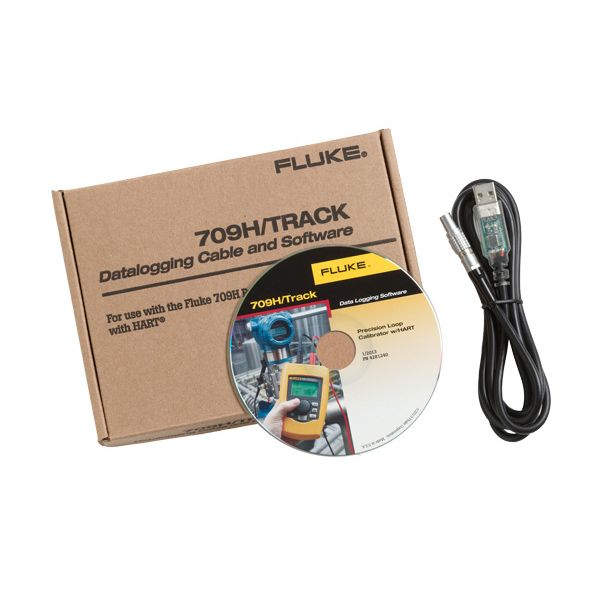Fluke 711
$487Key Features and Specifications of the Fluke 705 The Fluke 705 is an advanced loop calibrator designed to meet the demanding needs of industrial and field applications. Its comprehensive measurement capabilities make it an indispensable tool for professionals. The device can measure and source current, voltage, and resistance, providing unparalleled flexibility and precision in various testing scenarios. Specifically, the Fluke 705 can measure current up to 24 mA, voltage up to 28V, and resistance up to 1,100 ohms, making it suitable for a wide range of applications. One of the standout features of the Fluke 705 is its high accuracy levels, which ensure reliable and repeatable measurements. With a current measurement accuracy of ±0.015% and a voltage measurement accuracy of ±0.02%, it offers exceptional performance that users can trust. The calibrator also includes a large, clear display that shows readings in both digital and analog formats, enhancing readability and reducing the risk of errors during operation. Power supply versatility is another strong point of the Fluke 705. It operates on a standard 9V battery, providing convenience and ease of replacement. Additionally, the device supports DC power supply, which can be particularly useful in extended field operations. Connectivity options include a built-in RS232 interface, allowing for seamless data transfer and integration with other systems, thus simplifying data management and analysis. What sets the Fluke 705 apart from other loop calibrators is its user-friendly interface, designed to streamline workflows and improve efficiency. The automatic step and ramp functions are notable features that enable smooth and precise control of output signals, facilitating accurate calibration and testing processes. Moreover, the Fluke 705 incorporates built-in safety features such as over-voltage protection and fuse protection, ensuring the safety of both the device and the user during operation. In summary, the Fluke 705 is a multifunctional loop calibrator that excels in measurement accuracy, ease of use, and safety. Its robust design and versatile features make it a top choice for professionals seeking reliable and efficient loop calibration solutions. Practical Applications and Benefits of Using the Fluke 705 The Fluke 705 Multifunctional Loop Calibrator is an invaluable tool across various industries, particularly in process control, manufacturing, and maintenance. Its versatility and precision make it an essential instrument for calibration, troubleshooting, and maintenance of control loops and instruments. In process control environments, the Fluke 705 is frequently employed to ensure the accurate performance of sensors and transmitters. By simulating process variables, it allows technicians to verify the accuracy of the control system without needing to disrupt the actual process. This capability is crucial for maintaining system integrity and preventing downtime, which can be costly in industries such as chemical processing and oil refining. Within manufacturing, the Fluke 705 aids in maintaining the precision of automated equipment. For instance, it can be used to calibrate temperature controllers and pressure transmitters, ensuring that machinery operates within specified tolerances. This precision not only enhances product quality but also prolongs the lifespan of manufacturing equipment by preventing undue stress caused by out-of-tolerance operations. Maintenance teams benefit significantly from the Fluke 705’s capabilities in troubleshooting. Its ability to source and measure mA signals enables quick identification of issues within control loops. For example, in a scenario where a valve is not responding correctly, the Fluke 705 can help determine whether the problem lies with the valve itself or with the control signal, thus speeding up the diagnosis and repair process. One of the standout benefits of the Fluke 705 is the time savings it offers. With its intuitive interface and multifunctional capabilities, technicians can perform multiple tasks with a single device, reducing the need for numerous instruments and simplifying the workflow. Enhanced precision is another critical advantage; the Fluke 705’s high accuracy ensures that calibrations and measurements are reliable, which is vital for maintaining process consistency and product quality. Ease of use is another significant benefit. The Fluke 705 is designed with user-friendly features, such as a clear display and straightforward controls, making it accessible even to those with limited experience in instrument calibration. Moreover, improved safety is a crucial consideration; the Fluke 705’s robust design and reliable performance minimize the risk of errors that could lead to hazardous situations. Real-world examples underscore the impact of the Fluke 705. In a case study involving a pharmaceutical manufacturer, the use of the Fluke 705 for regular calibration of temperature and pressure sensors resulted in a marked improvement in product consistency and a reduction in production downtime. Similarly, a petrochemical plant reported significant maintenance efficiency gains by utilizing the Fluke 705 for control loop troubleshooting, reducing their average repair time by 30%.



